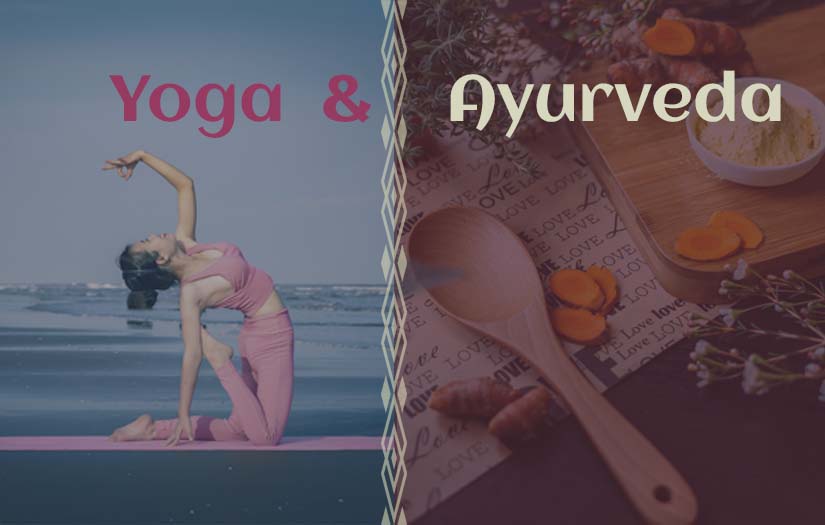
Many of us doubt whether Ayurveda and Yoga are connected, and if so, how? If you are one of them, then this blog is for you!
Before discussing their connection, let us clear the confusion between Yoga and asana. (Nowadays, they both are used interchangeably) Yoga in Sanskrit translates to union, which refers to the union of the mind and the body. Many people confuse Yoga as a form of exercise. Still, it is not just a typical workout but a holistic way of life with several practices like asana (yogic poses), pranayama (breathing exercises), meditation, etc., for a healthy mind and body. So, Yoga is beyond asanas.
Ayurveda, the holistic healing science, is one of the world’s ancient medicinal sciences. It is the only medical system in the world that explains herbs, wellness, and medicines in hymns. Interesting.
Ayurveda and Yoga are not two conflicting sciences, but they complement each other. Yes, they go hand in hand so well.
As per yogic science, we have
Initially, the disease occurs at the sukshma share, and then it manifests in the physical body. Yoga, with its practices such as yama, niyama, asanas, pranayama, meditation, etc., focuses on preventing diseases before it manifests in the Chula sharara, aka gross body.
Ayurveda also greatly emphasizes on preventive approach for a healthy body and mind by adopting a holistic way of life by following the ‘dinacharya’ ( dina - means day and acharya - means activity, dinacharya is thus translated to daily routine to be followed, which is in alignment with the nature,) and ‘ritucharya’ (guidelines to be followed according to the change of seasons, Ritu - means season in Sanskrit).
The age-old saying “Prevention is better than cure!” is the mantra for both Ayurveda and Yoga.
In both Ayurvedic and Yogic traditions, emphasis is given to the body cleansing processes. In Yoga, the shat karmas (aka shat kriyas) mentioned in the Hatha Yoga Pradeepika (a classical yogic text) are all about the 6 types of cleansing procedures for the human body. Similarly, in Ayurveda, we have the pancha karma treatment for cleansing and rejuvenation.
Ayurveda and Yoga place a lot of importance in the realms of cleanliness, not only in terms of therapy but in everyday life too. In Yoga, the concept called Shaucha (cleanliness) is one of the 5 niyamas (code of conduct towards oneself). It refers to not just a clean body but a clean mind too. In the same way, Ayurveda prescribes cleansing of the body and mind as part of everyday routine (aka dinacharya).
Ayurveda and Yoga give importance to a calm, peaceful and happy state of mind. Ayurveda recommends the practice of pranayama and meditation for having a tranquil state of mind, which further aids in the healing of diseases. In Yoga, one of the niyamas is Santosha, which means contentment. Yoga advises us to have a sense of contentment while performing our duties. A pleasant mind emits positive vibes around. And in today’s world, where there is no shortage of negativity around us (be it through social media, news channels, etc.), don’t you think it is beautiful if we do not compromise on our inner peace and happiness? Yes, that is what our ancient texts of Ayurveda and Yoga emphasize. Health is not just the absence of diseases but also a calm state of mind.
When you combine the Ayurvedic and yogic principles of life, you undoubtedly follow a rich holistic way of living! It nourishes not just your physical body but your mental, emotional and spiritual well-being is also taken care of.
Let us learn this from the masters and lead a happy, peaceful, healthy life. Happy living! Namaste.